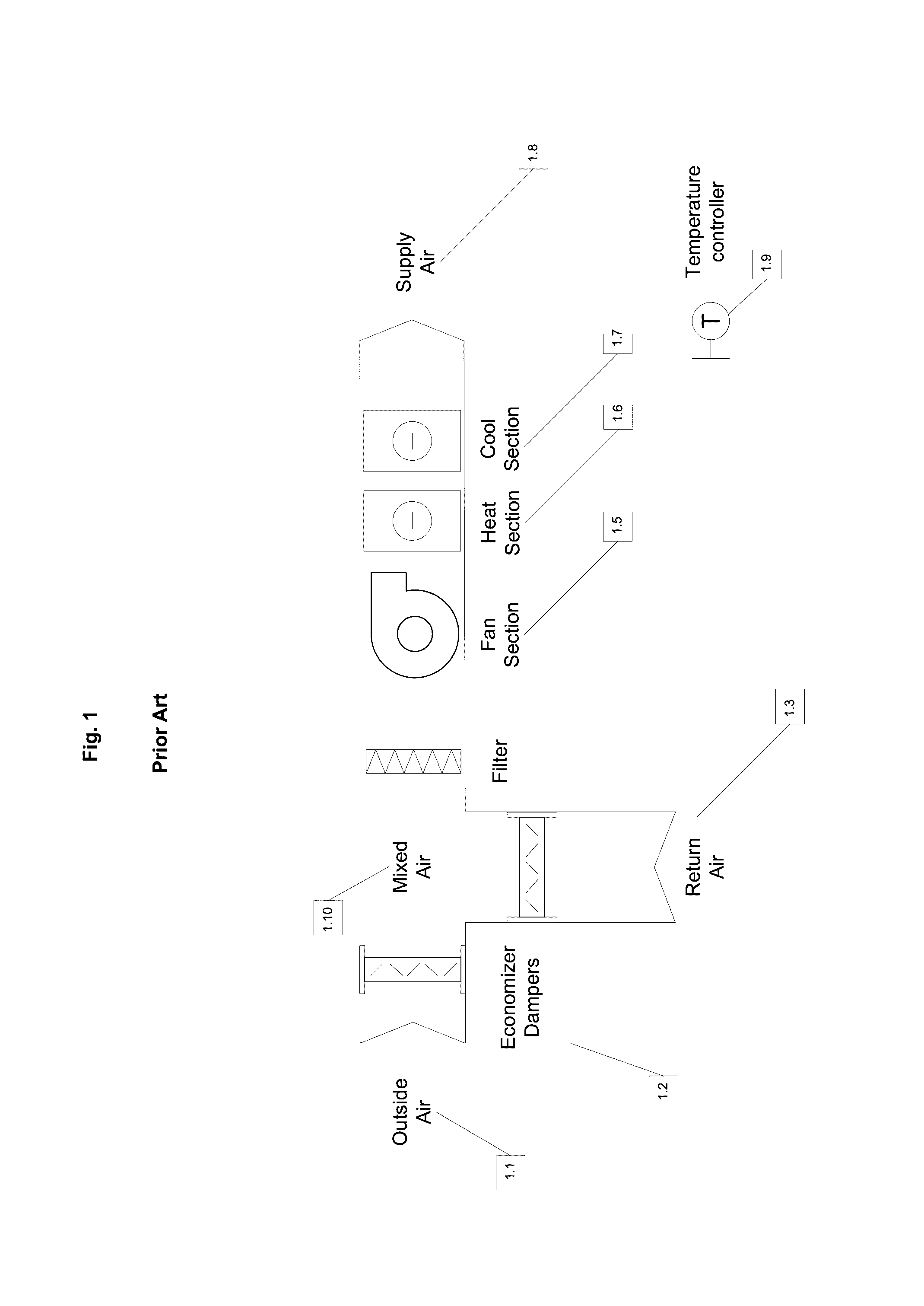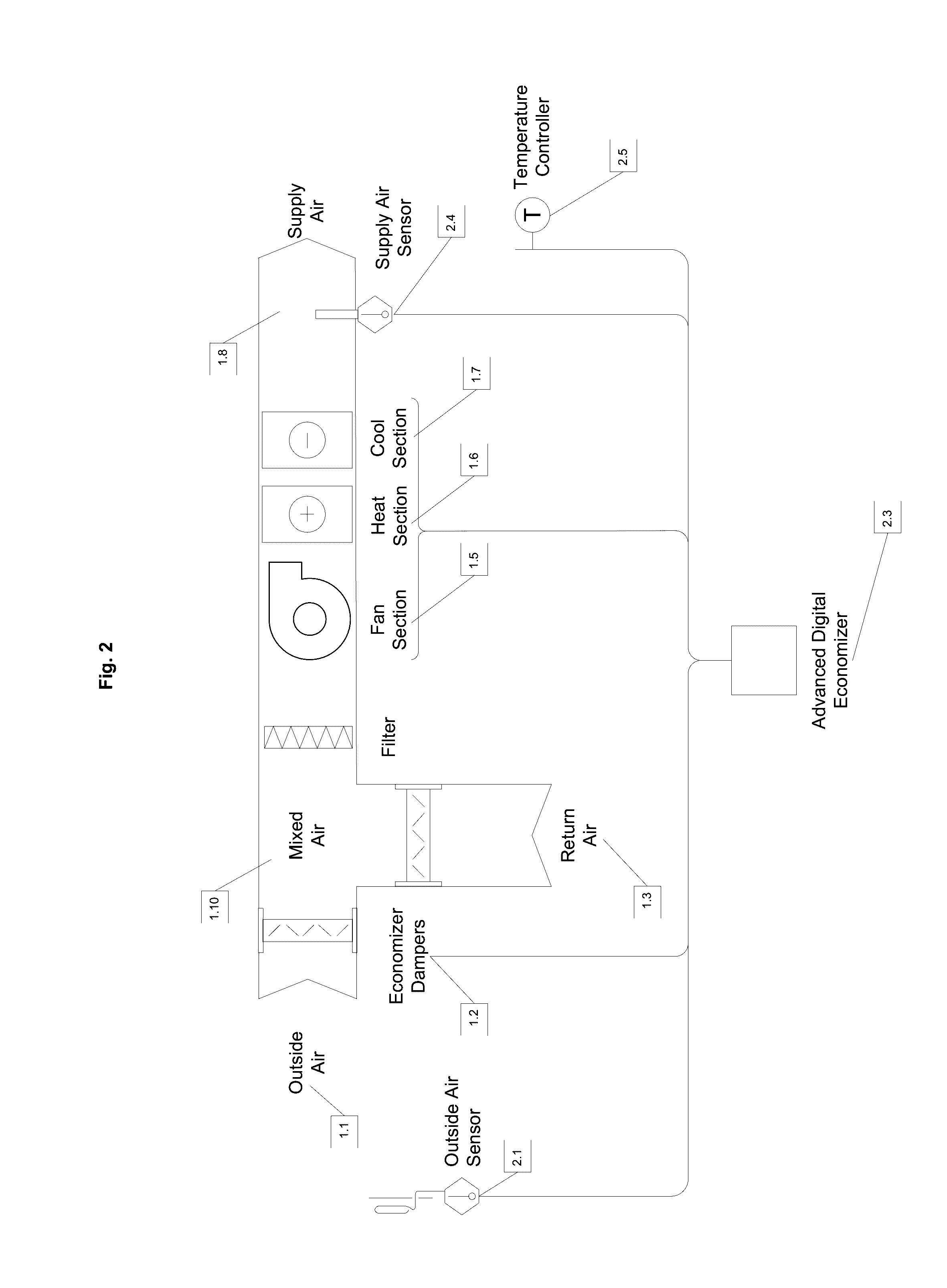Method of advanced digital economization
a technology hvac system, applied in the field of advanced digital economization strategies for hvac systems, can solve the problems of over-ventilation of the space, not taking into account the outside air temperature or the heating/cooling needs of the space, and detrimental impact on energy use, so as to overcome limitations and excess energy use, increase the energy savings available, and improve the effect of energy saving
- Summary
- Abstract
- Description
- Claims
- Application Information
AI Technical Summary
Benefits of technology
Problems solved by technology
Method used
Image
Examples
Embodiment Construction
[0024]Referring to FIGS. 1-9, and 11, the present invention is directed to a system and method for utilizing advanced digital control economizer strategies that reduce energy usage by employing outside air as a cooling asset when the building space has not triggered a call for cooling. Essentially, a building space is preemptively cooled (or “pre-cooling”) in optimum dead-band ranges that are established.
[0025]According to one aspect of the invention, the system utilizes an advanced digital economizer (ADE) that consists of a computerized processing unit, environmental sensors, and an interface to an HVAC system. The ADE includes the ability to connect to the HVAC conditioning control points, fan command and fan speed, and an economizer actuator. It has the ability to provide standard low voltage thermostat type control signals to HVAC equipment and modulating resistive or voltage signal to the economizer actuator. The ADE can be used with either new or existing equipment. The ADE c...
PUM
 Login to View More
Login to View More Abstract
Description
Claims
Application Information
 Login to View More
Login to View More - R&D
- Intellectual Property
- Life Sciences
- Materials
- Tech Scout
- Unparalleled Data Quality
- Higher Quality Content
- 60% Fewer Hallucinations
Browse by: Latest US Patents, China's latest patents, Technical Efficacy Thesaurus, Application Domain, Technology Topic, Popular Technical Reports.
© 2025 PatSnap. All rights reserved.Legal|Privacy policy|Modern Slavery Act Transparency Statement|Sitemap|About US| Contact US: help@patsnap.com



